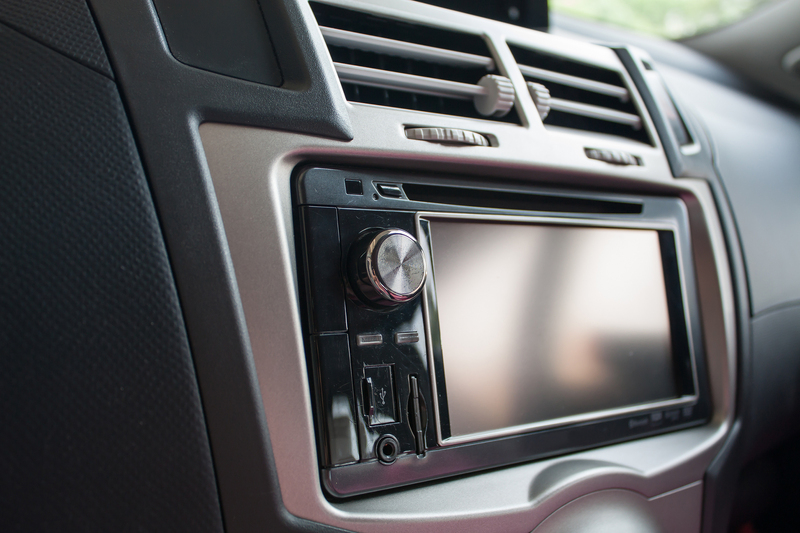Quick Start Guide to Moving Your Bed and Mattress
Posted on 26/05/2025
Quick Start Guide to Moving Your Bed and Mattress
Moving your bed and mattress doesn't have to be a daunting task! Whether you're relocating across the city or to a new apartment, transporting these essential pieces of furniture can seem overwhelming. However, with the right approach and preparation, you can simplify the entire process. This easy-to-follow guide covers all steps, essential tips, and addresses common challenges to ensure your mattress and bed arrive safely and efficiently. If you're searching for the best ways to move your bed and mattress, you've come to the right place.

Why Properly Moving Your Bed and Mattress Matters
Mattresses typically cost hundreds or even thousands of dollars, and your bed frame can be both expensive and sentimental. Improper handling can result in damage, discomfort, and added expenses. Additionally, a well-protected mattress ensures you continue enjoying a clean and supportive place to sleep in your new home.
- Protects your investment: Mattresses are costly to replace or repair.
- Prevents injuries: Mattresses and bed frames are heavy and unwieldy.
- Avoids property damage: Walls, floors, and doors can be scratched or dented.
- Promotes cleanliness: Mattresses easily attract dust, dirt, and pests during a move.
Pre-Move Preparation Tips
Early planning leads to a smoother relocation! Here are some tips to get started:
- Measure everything: Know your bed and mattress dimensions as well as all doors, hallways, elevators, and staircases on both ends of your move.
- Gather supplies: Mattress bags, moving blankets, plastic wrap, and tape are essential for protecting your items.
- Clear a path: Remove obstacles ahead of time to create a safe, easy route for moving large pieces.
- Find help: Ask friends, family, or hire movers to assist; beds and mattresses are rarely a one-person job.
The Best Supplies for Moving Your Mattress and Bed
Having the right tools is crucial for an efficient mattress relocation. Here's what you'll need:
- Mattress Bag: Designed to cover and protect against dirt, moisture, and tearing.
- Moving Blankets: Provide cushioning, especially important for memory foam or hybrid models.
- Plastic Wrap or Bubble Wrap: Secures loose parts and adds an extra defense layer.
- Packing Tape: Reinforces all wrapping and keeps covers sealed.
- Tool Kit: Necessary for bed frame disassembly and reassembly.
- Furniture Sliders or Dollies: Make moving heavy items much easier and protect your floors.
- Labeling Supplies: Mark parts for reassembly, especially for complex bed frames.
Step-by-Step Guide to Moving Your Bed Frame
1. Disassemble Your Bed Frame
Nearly all beds--including platform, metal, and wooden frames--require partial or full disassembly.
- Remove pillows, linens, and mattress and set them aside.
- Remove slats or support beams and pack them separately.
- Keep all screws, nuts, and bolts in a labeled bag or container.
2. Wrap and Protect Bed Parts
- Use moving blankets or large towels to protect headboards and footboards from dings and scratches.
- Wrap delicate or painted wood in bubble wrap, then tape gently.
- If your frame is upholstered, use stretch plastic wrap to shield fabric from dirt and moisture.
3. Transporting the Bed Frame
- Use a dolly or get help to carry large parts.
- Always lift with your knees and avoid twisting to prevent back strain.
- If moving in a van or truck, secure pieces along the sides to prevent shifting.
- Lay down pads or blankets to avoid scratches on wood or metal pieces.
How to Move a Mattress Safely and Easily
Step 1: Clean and Prepare Your Mattress
- Remove all bedding, pillows, and accessories.
- Use a vacuum or fabric cleaner to remove dust and debris.
- Let the mattress air out for an hour (if time permits).
Step 2: Bag Your Mattress
- Slip your mattress into a mattress bag; these are available at home goods, hardware stores, or online.
- Seal the bag tightly using tape, especially around the edges and opening.
- For added protection, wrap the entire mattress in moving blankets or sheets.
Step 3: Moving and Loading Your Mattress
- If possible, enlist a second person--mattresses are surprisingly heavy and floppy.
- For stairs, coordinate movements at the top and bottom for balance and control.
- Use mattress moving straps or a dolly for easier transport, especially with heavier or thicker models.
- Keep the route clear of obstacles; this minimizes tripping hazards.
*Pro Tip:* For memory foam or latex mattresses, always refer to manufacturer guidance--these types should never be bent or folded unless specified as "rollable" for moving.
Loading and Unloading: Transport Tips
Loading Your Mattress and Bed Frame Into a Moving Vehicle
- Lay the mattress flat, if possible, inside the van or truck. If vertical, secure to the vehicle wall with strong straps.
- Avoid placing heavy or sharp objects on top of your mattress.
- Place bed frame parts around the mattress or along the truck's sides to keep parts together and upright.
- Keep all hardware and small items in a clearly labeled box or bag in the cab of the truck to prevent loss.
Unloading and Setting Up at Your New Home
- Remove mattress and bed parts carefully; check for damage before bringing them inside.
- Bring all items indoors quickly, especially if the weather is humid or rainy.
- Reassemble the bed frame first, following your labeled parts and hardware.
- Once the bed frame is secure, remove the mattress from its bag, air it out for at least an hour, and then set it on the frame.
Tips for Specific Mattress Types
- Memory Foam Mattress: Avoid folding or bending. Always move on its side or flat.
- Innerspring Mattress: More rigid, but still requires careful maneuvering to avoid bending springs inside.
- Hybrid or Pillow-Top Mattress: Bulky and heavy. Two or three people may be required for safe transport.
- Box Springs: These can typically stand on their side but must be well-protected from punctures.
Common Mistakes to Avoid When Moving Your Bed and Mattress
- Skipping the mattress bag: This often leads to stains, tears, and possible pest infestation.
- Rushing disassembly: Leads to lost parts and improper reassembly later.
- Forcing frames through tight spaces: This can damage both the bed and your walls.
- Dragging mattresses or frames along the ground: Will ruin fabric and surfaces fast.
- Not checking for manufacturer-specific instructions: Especially important with high-end or specialty beds.
Frequently Asked Questions About Moving Beds and Mattresses
Can I move a mattress by myself?
It's possible with lighter, twin- or full-size mattresses, but a second person is always safer. For queen and king mattresses, always enlist help.
Will folding damage my *memory foam mattress*?
In most cases, yes. Check with the manufacturer--only mattresses rated "foldable or rollable for moving" should ever be bent or rolled.
Should I hire professional movers for just my bed and mattress?
If your bed or mattress is expensive, extremely heavy, or located in a challenging spot (such as a high-rise with no elevator), professional movers are a wise investment.
How do I keep my mattress clean during a move?
Use a mattress bag and move it directly from your old room to the vehicle--this minimizes exposure to dirt, rain, and pests.
Eco-Friendly Mattress Moving and Disposal Options
If you're replacing your bed, look for mattress recycling programs in your area. Many states ban landfilling mattresses, and specialized recyclers can reclaim up to 90% of mattress materials. Donate gently used beds to shelters or nonprofits if in good condition. For those keeping their mattress, using reusable mattress bags and moving blankets minimizes waste during your move.

Checklist: Quick Steps for Moving Your Bed and Mattress
- Measure all doorways and stairwells before moving day.
- Gather all supplies: Mattress bag, blankets, tape, tools, dolly, labels.
- Remove all bedding and clean the mattress and frame.
- Disassemble the frame carefully and keep hardware labeled.
- Wrap and secure all components for transit.
- Move the mattress and frame to the vehicle with a helper.
- Load mattress flat or vertically, fully secured.
- Unload promptly at your new home and reassemble.
- Let your mattress air out before use.
Conclusion: Start Your Move with Confidence!
Moving your bed and mattress is a big milestone of any home transition, but with smart planning and the right supplies, it becomes an organized, manageable task. Remember to protect your investment, practice safe moving techniques, and ask for help when needed. Following this quick start guide, your mattress and bed will provide comfort and support in your new space for years to come. For more moving tips and expert guidance on handling household items, bookmark this guide and share it with others starting their next chapter!



